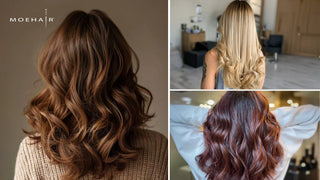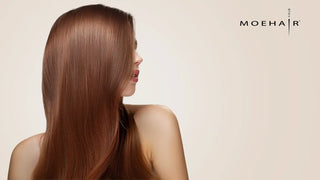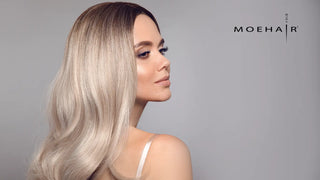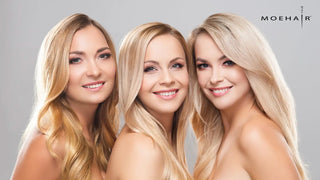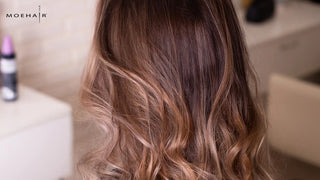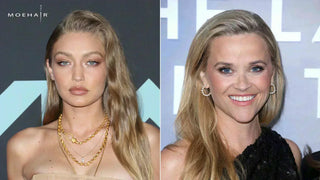 Table of contents
Table of contents
One of the most popular hair care services on the rise is coloring. It’s fun to change your hair color every 6-8 months, thanks to the ever-changing trends. But once you enter the salon to have a discussion with your stylist, it suddenly becomes vast and complex. Several confusing terms pop out, making it tough for you to decide. Here’s a brief guide on standard coloring techniques — highlights, single-process, and double process hair color, so you can go for your next salon appointment well prepared.
Also Read - Sandy Blonde Hair Color Ideas
As the name suggests, a single process hair color can be achieved in a single step. According to Master Colorist Stephanie Brown, “Single processes give you an all-over one color with little or no dimension. You may get slight variations of color if you use semi-permanent [hair color].” The double process hair color involves bleaching followed by dyeing. It is a more precision-based process that aims to transform the existing color dramatically. On the other hand, highlights include coloring a few strands a shade or two lighter than the base color. It’s like adding streaks to the mane.
Also Read - Guide To Hair Coloring Chart
| ## | Hair color highlights | Single process hair color | Double process hair color |
|---|---|---|---|
| What is it | Lightening specific strands of hair | Applying a single color all over the mane | Involves two steps: lightening the hair and then applying color |
| Ideal for | Adding dimension, creating a sun-kissed look or subtle change | Covering gray hair, touching up roots, and adding shine | Drastic color change, like going from dark to a very light or vibrant shade |
| Time required | 1.5-3 hours | 1-1.5 hours | 3-6 hours |
| Hair damage | Moderate, depending on lightener and aftercare | Minimal to moderate, depending on the color product | High due to the bleaching process |
| Techniques used | Foiling, balayage, babylights, and ombre | Application of color using a brush | Bleaching followed by toning or coloring |
| Maintenance | Requires touch-up every 6 to 8 weeks, less noticeable as it grows out | Requires touch-up every 4 to 6 weeks, more noticeable as it grows out | Requires touch-ups every 4 to 6 weeks for roots and color maintenance |
| Upkeep between appointments | Use color-protect shampoo and avoid excessive heat styling | Use color-refreshing products like gloss and conditioner | Use sulfate-free, color-protect shampoo and opt for deep conditioning treatments |
| Effect on different hair types | Works well on all hair types, especially for adding depth and dimension | Effective on all hair types for 100% gray coverage | Works on all hair types, but bleaching can be harsh on damaged strands |
| Color fade | Fades gradually, especially with sun exposure and excessive hair washing | Fades uniformly, depending on hair porosity and color product | Toned color can fade, revealing the underlying lightened hair |
Highlights
Hair color highlights are probably on everybody’s checklist! This all-time favorite technique adds a new dimension to the mane without bleaching or full coloring. It is a flattering choice for anyone and everyone, especially if your hair has few layers. With highlights, your colorist may prefer using more than one color to create a gradient effect. It is ideal for those who want a multi-dimensional look that is easy to maintain. Simply put, highlights are hair strands dyed in a lighter hue than the base color. Below are the common types you can choose from.

Also Read - Hazelnut Hair Color Ideas
- Traditional: Also known as foiling, this coloring technique involves lightening the strands from the root to the tip, leaving some natural hair in between.
- Babylights: These lightened tresses are more subtle and nuanced than traditional highlights. They give a natural and dimensional look, imitating the color of children’s hair.
- Balayage: A staple for gorgeous hair, this technique uses a free-hand painting process. It boasts a gradation of deeper to lighter tints from roots to tips.
- Ombre: Blending one tinge into another or existing hair color gives an ombre effect. It is usually characterized by moving hues from dark to light.
- Chunky: This is one of the hottest highlights, featuring thick streaks of bold colors like magenta and auburn. The chunky style gives an edgy finish with contrasting tints that pop out beautifully.
Also Read - Money Piece Hair Highlights
Single process hair color
This technique is apt for anyone who wants to add a hint of color in a simple, fuss-free way. The single process hair color is most commonly used for root touch-ups and gray coverage. All you need to do is mix the coloring cream with a developer, apply it to the desired area, and then rinse. It is a one-step method that requires no prior coloring experience. It works well for those who wish to embrace their existing hair color. You can even color your strands at home using the Moehair Permanent Hair Coloring Kit. The single process technique is best for you if:

- You have short hair that can’t be easily highlighted.
- You want to cover gray areas or touch up freshly grown roots
- You don’t wish to change the existing hair color dramatically
- You want to go 1-2 shades darker or lighter than the natural hair color.
Double process hair color
It refers to a two-step service that generally involves pre-lightening before color deposition. It allows for a significant and precise color change. Double process hair color can also use permanent dye followed by a gloss, depending on the desired result. It is a lengthy process in comparison with single process and highlights. Hairstylist Beau Dieda told PopSugar, “The first step usually involves lightening or bleaching the hair to remove the natural color. The second step involves applying the desired color to toner over the pre-lightened hair.” The double process is categorized into the following:

Also Read - Blonde Hair Color Ideas
- Bleaching + dyeing: It is the most prevalent type of hair coloring service, which involves pre-lightening for a rich color deposit. As bleach removes the natural pigment, it creates a blank canvas for the new hue.
- Bleaching + highlighting: If you’re drooling over blonde shades, this one's for you. It is the process of bleaching hair, followed by highlighting a few strands.
- Dyeing + glossing: Most of you expect salon treatment to go the extra mile and add a glossy shine to the mane. A glossing session after coloring does that for you in no time.
- Dyeing + highlighting: Dyeing with highlighting is like painting the canvas and adding drops of your favorite tinge from top to bottom.
At-home color care
Colored hair requires at-home care, no matter what coloring technique you use. It is always a better option than watching your hues fade away too soon. Whether you’ve colored your entire crown using single process hair color or just highlighted a couple of strands, some things need to be kept in mind between salon appointments.

Color-safe products only
Your colored strands are prone to fading, dryness, and damage. This is because coloring techniques, especially double process hair color, strip nutrients and moisture from the mane. It is best to use only color-safe products free of sulfate and other harmful chemicals.
Deep conditioning therapy
Opt for deep conditioning hair masks and conditioners for regular nourishment. They help replenish lost moisture and treat color-induced damage from root to tip, leaving soft, smooth tresses. A thorough deep conditioning therapy once a week takes care of shine and overall texture.
Tone down the brass
Hues like blonde and silver may develop ugly undertones. This mainly happens due to exposure to the sun and excessive hair washing. Bust the brass and other warm tones with the help of a hair toner. It deposits color pigments on the strands to neutralize brassiness and prevent color fading.
Also Read - A Guide To Hair Toner
Sprinkle gloss and shine
Even after using proven coloring methods like double process hair color, your tresses can lose their shine with time. This calls for an at-home glossing session. You can use gloss or glaze to refresh and adjust your hair color.
Do not overwash
Wash your hair only 1-2 times a week. Consider using a shower filter to protect colored strands from contaminants and minerals in water. Chlorine and minerals like copper and iron can damage hair color and cause dryness, but a shower filter can help maintain vibrant and healthy hair.
Ace your hair color game with personalized aftercare. Take our Hair Quiz for product recommendations and get started!
FAQs
Q1. How long do highlights last?
Hair color highlights can last up to 3 months, depending on hair porosity and the product used.
Q2. What is the difference between single process and double process hair color?
The single process hair color involves one-step coloring. It is used for gray coverage and root touch-ups. On the other hand, the double process hair color is a two-step technique that includes bleaching followed by dyeing.
Q3. How to maintain hair color highlights at home?
Highlights may require touch-ups every 6 to 8 weeks. To maintain their shine and vibrancy between salon appointments, choose color-safe shampoos, conditioners, and styling products. Do not overwash your colored tresses, and skip hot tools.
Q4. How long does single process hair color last?
Single process hair color may require touch-ups every 4 to 6 weeks, depending on hair porosity and the product used.
Q5. Is double process hair color a lengthy process?
Yes, double process hair color is a more lengthy process than highlights and single process. It may stretch somewhere between 3 to 6 hours.
References:
https://www.thelist.com/1320242/single-process-color-double-process-difference/https://www.popsugar.com/beauty/single-double-process-color-49365216
How we reviewed this article:
Our experts continually monitor the fashion and beauty space, and we update our articles when new information becomes available.
-
Current Version
-
Jun 20, 2024
Written By -
Upasana Kakati is a lifestyle writer with 7+ years of experience in writing in the beauty and haircare industry.
Edited By -
Saima Ahmed with 8+ yrs of experience, specializes in crafting engaging content focused on Hair care, lifestyle, and beauty.











